2 July
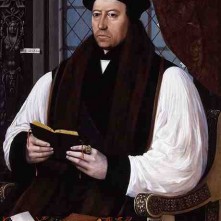
Thomas Cranmer
1489 - Archbishop Thomas Cranmer was born in Aslockton, Nottinghamshire, England. He was the son of Thomas Cranmer, and his wife Agnes (nee Hatfield). He served Henry VIII and Edward VI as Archbishop of Canterbury but was burnt at the stake for heresy by Mary I on 21 March 1556. Click here to find out more about him.
1497 – Death of Sir William Haute, composer and cousin of Elizabeth Woodville. Haute was Sheriff of Kent at various times, as well as a Justice of the Peace and Commissioner. According to his biographer, Peter Fleming, he was also a patron of musicians, and a composer, composing carols and “polyphonic settings of the Benedicamus domino”.
1536 – Thomas Cromwell formally appointed Lord Privy Seal in Thomas Boleyn's place.
1540 – Henry Fitzalan, the future 12th Earl of Arundel, appointed Deputy of Calais, replacing Arthur Plantagenet, Viscount Lisle.
1557 – Baptism of Philip Howard, 13th Earl of Arundel, son of Thomas Howard, 4th Duke of Norfolk, and his wife Mary (née Fitzalan). He was baptised in the Chapel Royal at Whitehall Palace with Philip of Spain and Nicholas Heath, Archbishop of York, standing as godfathers and Elizabeth Howard, dowager Duchess of Norfolk, standing as godmother.
1594 – Burial of Robert Scarlett (Old Scarlett), sexton at Peterborough Cathedral. A verse accompanying his portrait in the cathedral states that he buried Catherine of Aragon and Mary, Queen of Scots at the cathedral, but it is not known whether this is true.
1610 – Burial of Richard Knolles, historian and translator, at St Mary's Church, Sandwich. His works include “The Generall Historie of the Turkes” (1603), The “Six Bookes of a Commonweale” (1606), which was a translation of Jean Bodin's “La république”, and a translation of Camden's “Britannia”, which was not published.
3 July
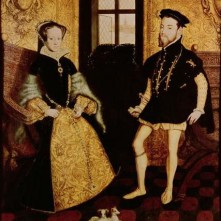
Mary I and Philip of Spain
1495 – The pretender Perkin Warbeck landed at Deal in Kent with men and ships. Around 150 of his men were killed and over 160 captured by Henry VII's troops. Warbeck escaped, fleeing to Ireland. Warbeck claimed to be Richard, Duke of York, the younger of the Princes in the Tower.
1533 - William Blount, 4th Baron Mountjoy, Catherine of Aragon's Chamberlain, was ordered to inform Catherine again that she must recognise her new title of 'Princess Dowager' and not use the title of 'Queen'. Catherine refused, and whenever she saw her new title written in letters, she crossed it out with a pen.
1541 – Death of Girolamo Ghinucci, Italian papal administrator, Bishop of Worcester, papal nuncio and ambassador. He died in Rome and was buried in the church of San Clemente.
1557 – Mary I bid farewell to her husband, Philip of Spain, at Dover as he set off for war with France.
1579 – Death of Sir Edward Fitton, administrator and Vice-Treasurer for Elizabeth I in Ireland. His death was recorded as being ‘from the disease of the country’, which he had apparently caught on an expedition to Longford. He was buried in St Patrick's Cathedral, Dublin, beside his wife, Anne.
1594 (3rd or 4th July) – Executions of Catholic priest John Cornelius, Thomas Bosgrave (a relation of Sir John Arundell) and two servants of the Arundell family at Dorchester. They had been arrested when Cornelius was found hiding in a priest hole at Chideock Castle on 14th April 1594.
4 July
1533 – Burning of John Frith, reformer, theologian and martyr, at Smithfield for heresy. Frith was charged with heresy because of his religious views, which included his belief that Christ's words about the sacrament, “This is my body”, were not to be taken literally. Frith was given the chance to recant, but he refused.
1550 – Appointment of Dr Robert Huick (Hewicke) as Physician Extraordinary to Edward VI by letters patent. His annual stipend was £50. Huick had served Edward's father, Henry VIII, during his final illness, and he also went on to serve Elizabeth I.
1597 – Executions of Catholic priest and martyr William Anlaby with Thomas Warcop, who had been charged with harbouring him, and layman Edward Fulthrop. Click here to read more.
1623 – Death of William Byrd, the famous Elizabethan English composer. He was buried next to his wife in the parish of Stondon Massey in Essex. Click here to read more about Byrd.
5 July
1535 - Sir Thomas More, who was imprisoned in the Tower of London and awaiting execution, wrote his final letter. It was to his beloved daughter, Margaret Roper, and it was written in coal. More was executed the following day.
1583 – Execution of John Copping, shoemaker and religious radical, for 'dispersing' books by Robert Browne and Richard Harrison, which were viewed as “sundry seditious, schismatical and erroneous printed books”. Copping had been arrested with his friend Elias Thacker, a tailor, and Thacker was executed the day before. Books were burned at each of their executions.
1589 – Executions of Catholic priests and martyrs George Nichols and Richard Yaxley, along with Catholics Thomas Belson and Humphrey Prichard. Nichols and Yaxley were hanged, drawn and quartered, and Belson and Prichard were hanged.
1589 – Hanging of Joan Cunny (Cony), one of the 'Essex Witches', at Chelmsford. Click here to read more.
1591 – Burial of Humfrey (Humfray) Cole, goldsmith, engraver, mathematical instrument maker and die sinker, at St Gregory by St Paul's, London. Cole was a die sinker at the Tower of London mint. His mathematical instruments included an armillary sphere, astrolabe and instruments needed for Martin Frobisher's 1576 voyage. Twenty-six of his instruments still survive today.
1600 – Execution of Jean Livingston (Lady Warriston) at the Girth Cross in Edinburgh. She was beheaded by the 'Maiden', a type of guillotine, for murder. Livingston was unhappily married to John Kincaid of Warriston when her nurse, Janet Murdo, came up with the idea of murdering him to release Livingston from her torment. Livingston asked a servant, Robert Weir, to do the deed, which he did on the night of 1st July 1600. Murdo was burned at the stake on Castle Hill and Weir, who had fled after the murder, was arrested in 1604 and 'broken on the wheel' at Edinburgh.
6 July
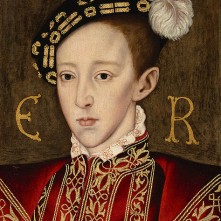
Edward VI
1535 - Execution of Sir Thomas More, Henry VIII's former friend and Lord Chancellor, for high treason for denying the King's supremacy.
1537 – Execution of Sir Robert Constable at Beverley's Gate in Hull. Constable had been an active participant in the Pilgrimage of Grace Rebellion in 1536, but had received a royal pardon and had gone on to try and suppress Bigod's Revolt in 1537. However, he was summoned to London in 1537, and subsequently tried and condemned to death. He was hanged in chains.
1553 - King Edward VI died at Greenwich Palace, leaving his throne to Lady Jane Grey. Click here to read more.
1560 – Signing of Treaty of Edinburgh (Treaty of Leith) between representatives of Elizabeth I and Francis II of France, husband of Mary, Queen of Scots. The terms were that French and English troops were to withdraw from Scotland and that Francis and Mary should stop using the title and arms of the monarch of England and Ireland, which belonged to Elizabeth I.
1570 – Death of Margaret Clement (née Giggs), wife of John Clement and adopted daughter of Sir Thomas More, in Mechelen where she and her husband had gone into exile. Margaret was buried in the Cathedral of St Rumbald. Trivia: In 1537, Margaret bribed the gaoler at Newgate Prison to let her feed the Carthusian priests who were starving there.
1583 – Death of Edmund Grindal, Elizabeth I's Archbishop of York and of Canterbury, at Croydon.
1585 – Executions of Thomas Alfield, Catholic priest, and Thomas Webley, a dyer, at Tyburn. They had been tried and condemned under statute 23 Eliz. c.2 s.2, which made the publication of any book attacking the queen a felony punishable by death. The book in question was Dr William Allen's book, “Modest Defence of the English Catholiques”, which Alfield and Webley had helped to distribute.
1614 – Death of Sir Anthony Cope, 1st Baronet, politician and Puritan. He was buried at Hanwell, Oxfordshire.
1618 – Death of John Davies of Hereford, poet and writing master. He was buried in the church of St Dunstan-in-the-West, London. His works included “The Scourge of Folly”, “Writing Schoolmaster”, or, “The Anatomy of Fair Writing” and “Mirum in modum: a Glimpse of Gods Glorie and the Soules Shape”.
7 July
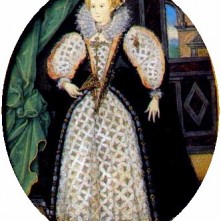
Penelope, Lady Rich, by Hilliard
1537 – Death of Madeleine de Valois, also known as Madeleine of France, first wife of King James V of Scotland. Madeleine died in her husband's arms at Edinburgh just six months after their wedding and less than two months after her arrival in Scotland. She was buried in Holyrood Abbey.
1540 – Anthony St Leger was appointed Lord Deputy of Ireland.
1545 – Death of William Crane, merchant, musician and Master of the Choristers of the Chapel Royal. He was buried in St Helen's Church, Bishopsgate, before the high altar.
1548 – Treaty of Haddington between France and Scotland. By the terms of this treaty, the Scots and French agreed to the marriage of Mary, Queen of Scots, and Francis, the Dauphin.
1553 – Goldsmith Robert Reyns informed Mary (future Mary I) of Edward VI's death. Mary was staying with Lady Burgh at Euston Hall, near Thetford, and Reyns had rushed from London to give her the news.
1556 (or 8th July) – Executions of Henry Peckham and John Danyell, conspirators. They were hanged, drawn and quartered after being found guilty of treason for their involvement in the Dudley Conspiracy.
1568 – Death of William Turner, naturalist, herbalist, ornithologist, reformer, physician and the man referred to as “the father of English botany and of ornithology”. He died at his home in Crutched Friars, London, and was buried in St Olave's Church, Hart Street.
1585 – Birth of Thomas Howard, 14th Earl of Arundel, 4th Earl of Surrey, and 1st Earl of Norfolk, politician and art collector, at Finchingfield, Essex. He was the only son of Philip Howard, 13th Earl of Arundel, and his wife, Anne Dacre.
1607 – Death of Penelope Rich (née Devereux), Lady Rich, at Westminster. Penelope was the sister of Robert Devereux, 2nd Earl of Essex, and is thought to have inspired poet Philip Sidney's “Astrophel and Stella”. She married Robert Rich, Lord Rich, in 1581, but was having a love affair with Charles Blount, Baron Mountjoy, by 1595. Penelope married Blount, who was now Earl of Devonshire, in a private ceremony in 1605 after her divorce. The marriage led to the couple's banishment from court. Devonshire died in 1606.
8 July
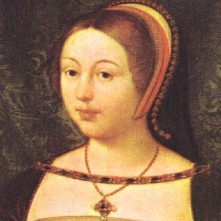
Margaret Tudor
1503 – Margaret Tudor said farewell to her father, Henry VII, and set off to Edinburgh to marry James IV. Anne Boleyn's father, Thomas Boleyn, was one of the men who accompanied her.
1536 – Death of William Wyggeston, merchant and benefactor, at Leicester. He was buried in the collegiate church of St Mary in the Newarke, Leicester, which was destroyed around 1548.
1540 – Abolition, by Henry VIII, of all heretical books and those containing errors.
1549 – The beginning of Kett's Rebellion. Robert Kett, a Norfolk farmer, agreed to lead a group of protesters who were angry with the enclosure of common land. The protesters marched on Norwich, and by the time they reached the city walls, it is said that they numbered around 16,000. Click here to read more.
1553 - Mary Tudor, daughter of Henry VIII and sister of the late King Edward VI declared herself queen at Kenninghall in Norfolk. Click here to read more.


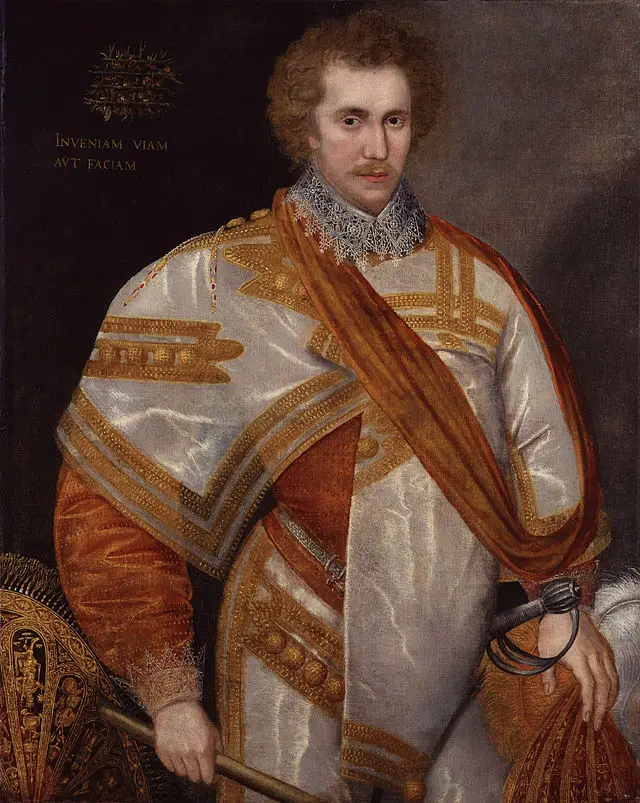
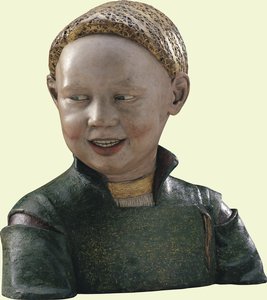
Leave a Reply